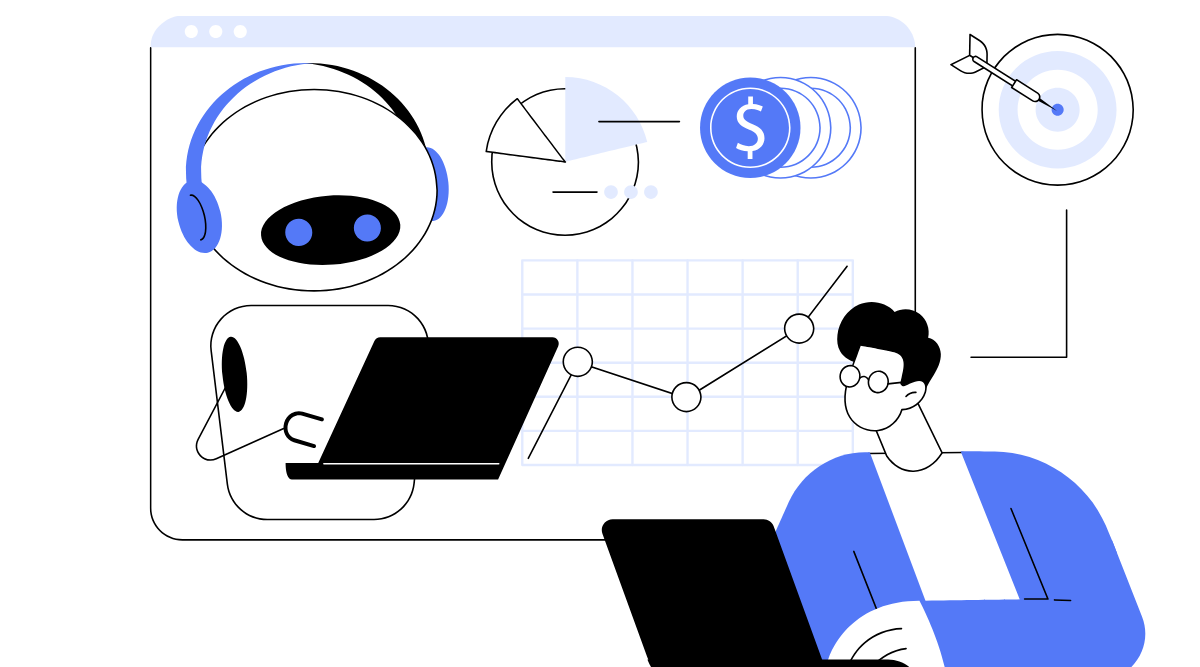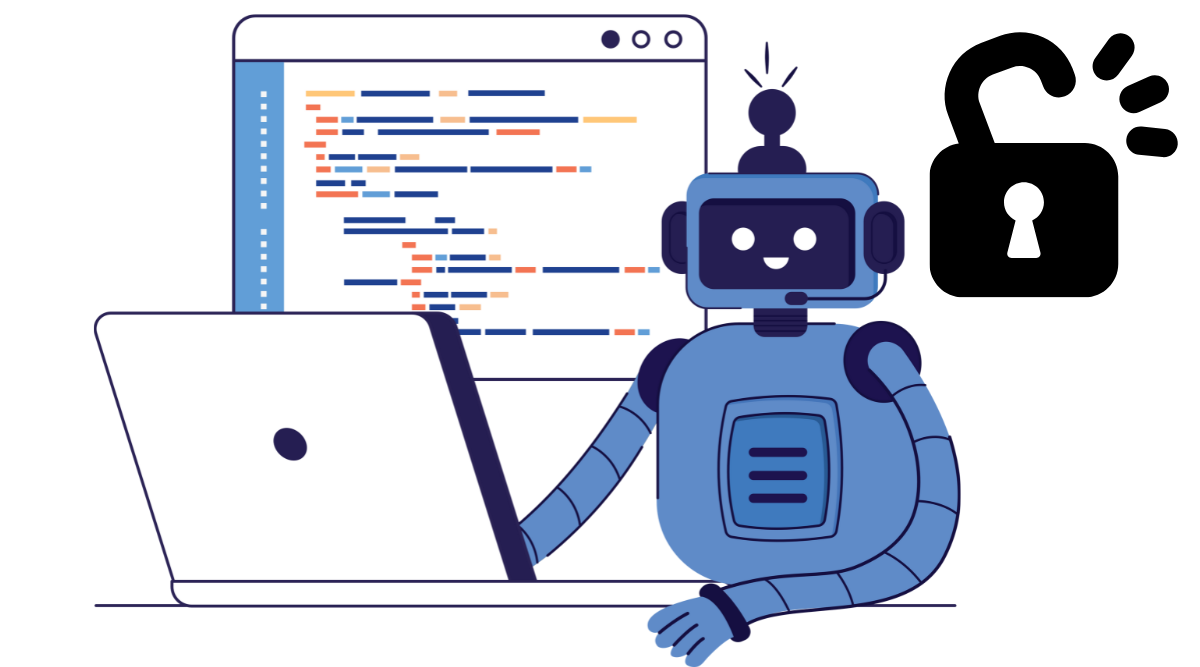Mastering Email Personalization with Buyer Intent Insights
Discover advanced strategies for tailoring emails using buyer intent signals to boost engagement and conversion rates.

In the ever-evolving landscape of digital marketing, personalization stands as a pivotal strategy in bolstering customer engagement. At the heart of personalization lies the concept of understanding your customers — their needs, preferences, and intentions. One of the most effective ways to achieve this is by integrating buyer intent insights into your email marketing strategy. Companies like Floworks.ai are leading the way by providing AI-driven solutions that harness these insights to drive meaningful interactions with their audience.
Understanding Buyer Intent in Email Marketing
Buyer intent refers to the cues and signals that indicate a consumer's readiness to make a purchase. These signals are derived from various interactions and data points, making them invaluable in crafting personalized email marketing campaigns.
The Role of Buyer Intent in Personalizing Emails
Buyer intent plays a crucial role in personalizing emails by allowing marketers to tailor content that resonates with the recipient's current needs. By accurately assessing a customer's intent, marketers can:
- Deliver targeted content: Send emails that match what customers are looking for, enhancing relevance and increasing engagement.
- Anticipate customer needs: Predictive intent analysis helps in forecasting what products or services might interest the buyer.
This targeted approach not only improves open and click-through rates but also fosters a deeper connection with subscribers, enhancing customer loyalty and satisfaction.
How Buyer Intent Signals Impact Email Campaigns
The impact of buyer intent signals on email campaigns is profound. When utilized effectively, these signals can drive more personalized and impactful communications. Here’s how:
- Improved segmentation: Dividing audiences into intent-based segments allows for highly targeted messaging.
- Enhanced timing: Sending emails based on real-time intent cues ensures messages reach recipients when they're most likely to engage.
- Tailored content: Crafting email content that aligns with identified intent can substantially increase conversion rates.
Case Studies: Success Stories of Intent-Driven Emails
Numerous brands have successfully implemented intent-driven email strategies, leading to notable improvements in their marketing outcomes. A notable success story involves a retail company that used buyer intent signals to identify customers interested in eco-friendly products. By segmenting this audience and sending targeted promotions, the company saw a 25% increase in conversion rates and a significant boost in customer loyalty.
These examples underline the efficacy of intent-driven email marketing and highlight how real-time data can transform customer interactions.
Key Buyer Intent Signals for Email Personalization
Understanding key buyer intent signals is paramount for driving personalization in email campaigns. These signals emanate from various consumer interactions, offering deep insights into their purchasing behavior.
Identifying Purchase Intent from Online Behaviors
Purchase intent can often be discerned through the online behavior of consumers. Key markers include:
- Browsing patterns: Frequent visits to product pages or return visits to your website signal a heightened interest in specific products.
- Cart activity: An abandoned cart can point to strong purchase intent, offering an opportunity for follow-up emails to encourage completion.
By monitoring these behaviors, marketers can identify high-intent prospects and focus their efforts on converting these leads.
Leveraging Search Queries and Website Interactions
Analyzing search queries and tracking website interactions can further illuminate buyer intent. Here’s how:
- Search terms: Keywords used in search engines can reveal what products or services interest a consumer.
- Page views and clicks: Monitoring which pages a user visits and how they navigate through your site offers valuable insights into their interests.
By aligning email content with these insights, marketers can craft messages that address the specific needs and inquiries of their audience.
Utilizing Social Media Activity for Intent Recognition
Social media platforms are a treasure trove of buyer intent signals. Users express their wants and needs through likes, comments, and shares, which can be leveraged to personalize email content.
- Engagement metrics: Track interactions with your brand’s social media profiles to identify potential leads.
- Mention analysis: Gauge sentiment and intent by analyzing how users mentioning your brand interact with your content.
Using social media insights allows marketers to refine their email strategies, ensuring they reach potential customers with content that matters to them.
Crafting Personalized Emails Using Buyer Intent
Once buyer intent data is collected, the next step is to effectively incorporate this information into your email marketing efforts to maximize impact.
Segmenting Your Audience Based on Intent Data
Segmentation is the backbone of personalized email marketing. By grouping your audience into segments based on their intent:
- Targeted messaging: Create specific content segments that speak to different stages of the buying process.
- Resource allocation: Allocate marketing resources more efficiently by focusing on segments with the highest conversion potential.
This approach ensures that each email recipient receives communications relevant to their interests, increasing the likelihood of engagement and conversion.
Dynamic Content Strategies for Enhanced Personalization
Dynamic content allows marketers to adjust email components in real-time based on buyer intent:
- Personalized recommendations: Use intent data to feature products or services aligned with the customer's interests.
- Tailored offers: Customize offers based on previous interactions, such as exclusive discounts for frequent visitors.
By deploying dynamic content, brands can make their communications more relevant and engaging, fostering a stronger relationship with their audience.
Building Personalized Email Journeys with Intent Insights
Creating a personalized journey involves leveraging intent insights to guide subscribers from initial engagement to purchase:
- Automated workflows: Design workflows that respond to intent data, such as welcome series that adjust based on the recipient's level of engagement.
- Nurturing paths: Develop content paths that adapt as the customer’s needs evolve.
This approach ensures each subscriber receives a personalized experience, enhancing satisfaction and loyalty over time.
Enhancing Engagement with Intent-Driven Content
Understanding and leveraging buyer intent can transform your email marketing from generic broadcasts to targeted, impactful communications. This approach not only personalizes the customer experience but also significantly boosts engagement metrics such as open and click-through rates.
Strategies for Increasing Open and Click-Through Rates
Open and click-through rates are critical indicators of an email campaign's success. By utilizing buyer intent signals, you can significantly improve these metrics:
- Craft Intent-Relevant Content: Tailor your email's content based on specific buyer signals, such as earlier interactions or expressed interests. This could mean addressing a customer's recent search queries within the email's main message.
- Timely Delivery: Use intent signals to send emails at optimal times. For example, if a consumer demonstrates behaviors that suggest peak research times, align email delivery accordingly to maximize visibility and engagement.
- Engaging Preheaders: The preheader text is an extension of the subject line, offering a preview of the email content. Optimize this space to emphasize elements aligned with the detected intent, like ongoing offers on recently browsed products.
Aligning Subject Lines with Recognized Buyer Intent
Effective subject lines can capture attention and encourage recipients to open emails. Linking these lines with buyer intent can enhance this effect:
- Use Specificity: Incorporate specifics drawn from the recipient's intent data. For example, if someone showed keen interest in a specific category, such as sustainable fashion, mention this directly in the subject.
- Create Urgency: If intent data suggests that a user is on the verge of making a decision, phrasing subject lines to include urgency (e.g., "Last Chance on Top-Searched Eco-Friendly Apparel") can nudge them toward conversion.
- Personalized Touch: Addressing the recipient by name and referring to their personal interests (gleaned from intent data) in the subject line can significantly enhance open rates.
Creating Call-to-Actions That Resonate and Convert
A well-crafted call-to-action (CTA) is crucial for guiding the recipient towards a desired response, such as making a purchase or visiting a landing page. Ensure your CTAs align with the user's intent for maximum effectiveness:
- Relevance: Customize CTAs to reflect the recipient's intent and preferences. For instance, instead of a generic “Shop Now,” try “Explore Your Favorite Eco-Friendly Picks.”
- Clarity: Ensure that the CTA clearly conveys the action you want the recipient to take. Clutter and confusion can detract from the intended message and reduce conversions.
- Visibility: Position CTAs prominently within the email and consider rendering them as buttons, which stand out more effectively in mobile and desktop views.

Exploring Advanced Email Personalization Techniques
To maximize the potential of buyer intent signals in email marketing, it's essential to explore advanced techniques that can push personalization to new heights. Emerging technologies and strategies provide innovative pathways to enhance customer interactions.
Incorporating AI for Better Intent Analysis
Artificial Intelligence (AI) can process vast amounts of data, uncover patterns, and predict future behaviors with accuracy, making it indispensable in personalizing email campaigns:
- Predictive Modeling: AI algorithms can anticipate customer needs by analyzing historical data and real-time interactions, allowing for better-targeted and timed emails.
- Automation: AI can automate email crafting, ensuring messages are sent based on optimal trigger points identified by intent data, increasing efficiency and effectiveness.
- Enhanced Personalization: AI-powered platforms like Floworks.ai refine and customize content based on nuanced intent data, delivering remarkably personalized customer experiences.
Predictive Analytics in Email Personalization
Predictive analytics utilizes statistical techniques and data modeling to forecast future behaviors and trends, enhancing the effectiveness of email campaigns:
- Trend Analysis: Predictive tools can identify purchasing trends, allowing marketers to tailor campaigns proactively ahead of demand fluctuations.
- Behavior Scoring: By scoring potential leads based on their intent signals, predictive analytics helps allocate resources toward high-impact prospects more efficiently.
- Lifecycle Modeling: Create customer journey maps that adapt to predictive insights, delivering key messages at pivotal moments in the purchase cycle to nurture conversion.
Best Practices for Continuous Personalization Improvement
To sustain and enhance email results, apply continuous improvement practices focused on personalization strategies:
- Regularly Update Data: Use fresh intent data to maintain relevance in messaging. Buyer behaviors evolve, and insights should be regularly revisited and refined.
- A/B Testing: Conduct regular tests on subject lines, content, and CTAs to assess performance and effectiveness. Use insights gained to refine communication strategies further.
- Feedback Loops: Create mechanisms to capture recipient feedback and use this data to adapt and improve email personalization strategies.
By integrating these advanced techniques into your email marketing efforts, brands like Floworks.ai can unlock significant value through improved customer connection and optimized marketing performance.

Measuring Success: Metrics and KPIs for Intent-Driven Emails
After implementing intent-driven email strategies, measuring the impact is essential to understand what works and where improvements are necessary. Analyzing key performance indicators (KPIs) will help in refining and optimizing email marketing efforts.
Understanding Key Engagement Metrics
Several metrics are vital in evaluating the success of intent-driven emails:
- Open Rate: This metric reveals how many individuals opened your email, providing insight into the effectiveness of subject lines and sending times.
- Click-Through Rate (CTR): CTR measures the percentage of recipients who clicked on a link within your email, indicating the content relevance and CTA effectiveness.
- Conversion Rate: The percentage of email recipients who completed the desired action, such as making a purchase, reflects the overall success of your email content and strategy.
Attributing Email Success to Buyer Intent Data
Proper attribution of email success to buyer intent data entails analyzing how intent-driven personalization influences these metrics:
- Buyer-Journey Correlation: Measure how well email performance aligns with different stages of the buyer journey identified through intent data.
- Content Relevance Index: Develop an index to track how specific intent signals correlate with engagement. Higher engagement driven by targeted content is a testament to effective intent utilization.
Adjusting Strategies Based on Analytical Feedback
Continual improvement is crucial. Here’s how to adjust strategies using analytical feedback:
- Dynamic Adjustments: Use real-time data to adjust email content dynamically, personalizing it further based on user interactions.
- Iterative Refinement: Regularly revisit and refine segmentation strategies based on engagement trends. Deploy continuous testing frameworks to trial different approaches.
- Strategic Alignment: Ensure campaign objectives remain aligned with insights from intent data and adjust focus areas as the market dynamics evolve.
By focusing on these metrics and employing data-driven strategies, you can ensure that your email campaigns remain responsive, relevant, and impactful. By leveraging the capabilities of Floworks.ai, brands can gain granular insights into campaign performance, driving continuous improvements and achieving marketing excellence.
Conclusion
Email personalization using buyer intent insights represents a monumental shift in how businesses engage with their audience. By tapping into the rich mine of data provided by consumer behavior and intent signals, companies can craft emails that are not only more engaging but also significantly more successful at converting prospects into loyal customers. The power of buyer intent lies in its ability to make communications more relevant and timely, greatly enhancing the overall experience for recipients.
Floworks.ai, with its advanced AI-driven solutions, showcases how businesses can efficiently harness these insights. By incorporating robust intent analysis into email strategies, marketers can move beyond generic campaigns, offering instead a tailored approach that resonates deeply with individual customer profiles. The result is a more meaningful dialogue between brand and consumer, fostering enduring brand loyalty and driving impressive business results.
To fully realize the potential of email personalization, marketers must continuously refine their segmentation strategies and content personalization techniques, staying attuned to the changing needs and intents of their audience. As you implement these strategies, remember that the journey to mastering personalized emails is an ongoing process, one that will reward you with stronger and more profitable customer relationships.
Frequently Asked Questions
How do buyer intent signals affect email relevance?
Buyer intent signals significantly enhance email relevance by ensuring that the content resonates with the recipient's current needs and interests. By analyzing actions like website visits, search queries, and social media interactions, marketers can understand what potential customers are interested in or considering. This data allows them to create highly focused and personalized email content that aligns with these identified interests, leading to improved engagement and a higher likelihood of conversion.
What tools can help in tracking buyer intent for emails?
Several tools can assist in tracking buyer intent, allowing marketers to gather valuable insights for email personalization. These tools often include web analytics software, customer relationship management (CRM) systems, and specialized buyer intent platforms like those provided by Floworks.ai. These solutions offer functionalities to trace user behavior, analyze search terms, and monitor social interactions, providing a comprehensive view of buyer intent that can be used to tailor email campaigns effectively.
How often should you update email segmentation strategies?
Email segmentation strategies should be revisited regularly to ensure they remain aligned with the evolving behaviors and preferences of your audience. It’s advisable to update these strategies at least quarterly, although the frequency might increase depending on changes in consumer behavior trends or significant shifts in the market. Regular analysis of engagement metrics, such as open and click-through rates, can provide insights into when and how segmentation updates are necessary to maintain optimal email performance.
Can AI really improve email personalization and how?
Yes, AI has a transformative impact on email personalization by enabling more precise analysis of buyer intent data. AI technologies can process large datasets to discern patterns and predict future behaviors, allowing marketers to create bespoke email experiences at scale. Companies like Floworks.ai utilize AI to devise intent-driven strategies, enhancing personalization efforts in real-time and ensuring that emails are consistently compelling and aligned with recipient expectations.
What is the biggest challenge in implementing buyer intent insights into email marketing?
One of the biggest challenges in implementing buyer intent insights is effectively integrating the data from various sources to craft a cohesive email strategy. Marketers need to ensure that the insights gathered from web analytics, social media, and other digital interactions are seamlessly combined to create accurate and actionable intent-based profiles. Another challenge lies in maintaining data privacy and ensuring compliance with regulations while collecting and utilizing buyer intent data. Overcoming these challenges requires robust systems and practices to streamline data processing and maintain trust with your audience.


